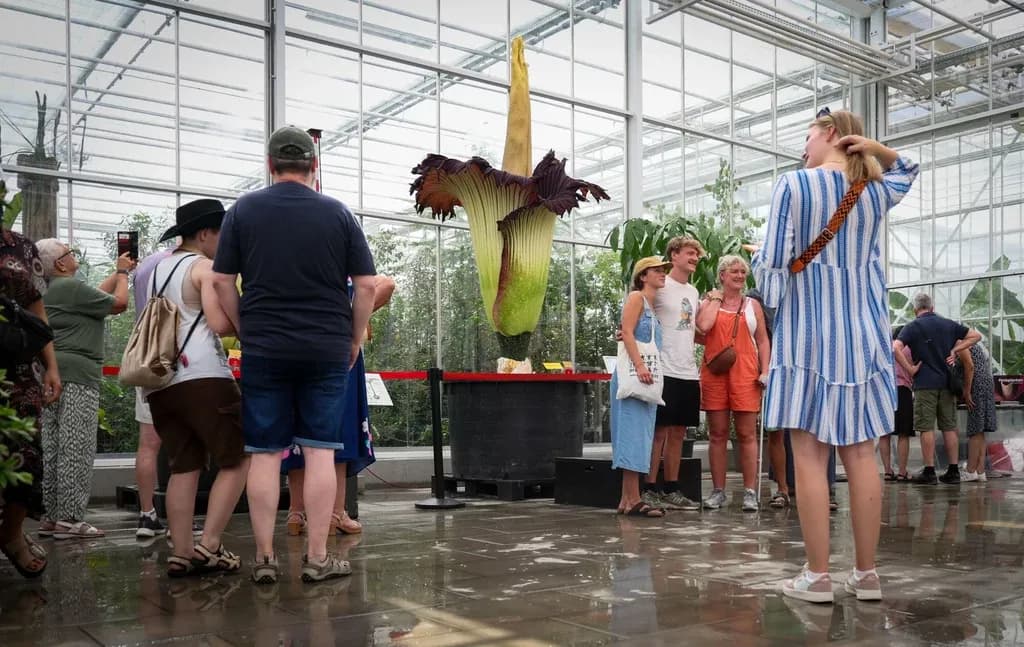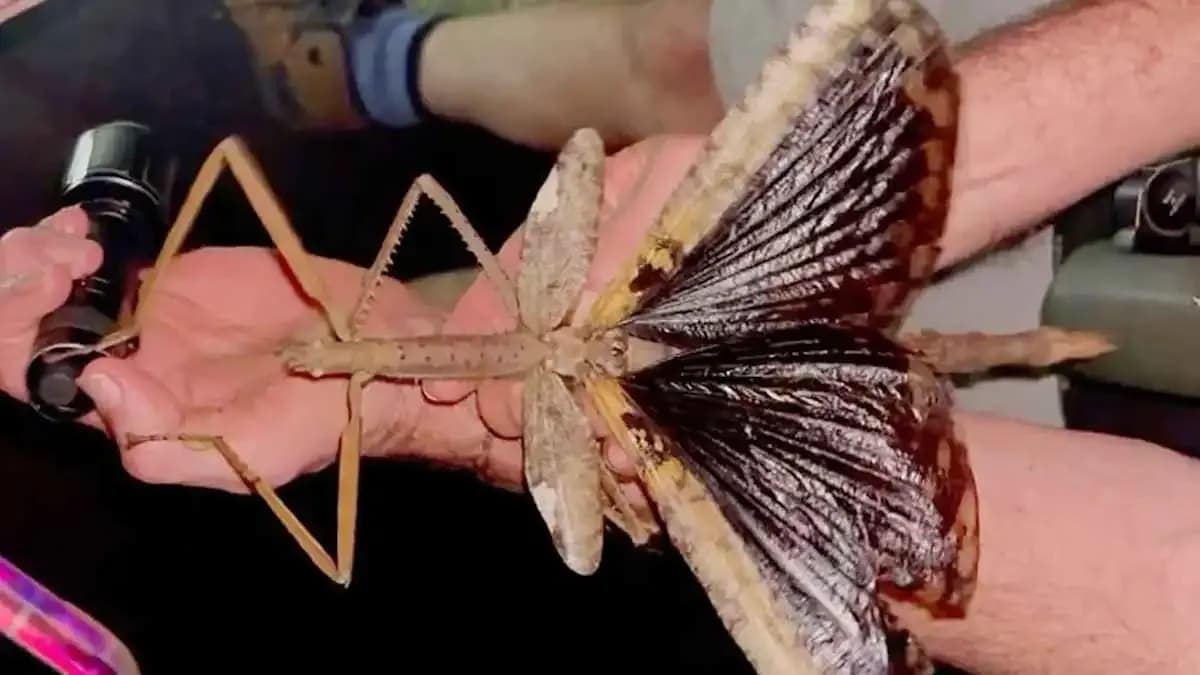Nature's Grand Paradox: Unearthing the Corpse Flower's Alluring Rottenness
Explore the Corpse Flower's paradoxical allure. Discover its unique biology, the dedication behind its survival, and why this giant, foul-smelling bloom captivates millions.
The Unforgettable Horticultural Spectacle
Imagine a botanical marvel so extraordinary, so fleeting, that it draws crowds, extends opening hours, and even warrants live online broadcasts. That's the scene whenever the , affectionately known as the corpse flower, prepares for its grand reveal. Hailing from the humid rainforests of , this colossal plant truly lives up to its 'titan' moniker. Its distinctive inflorescence, a massive structure of a spadix encircled by a reddish-brown spathe, can tower up to three meters high and spread over a meter and a half wide in its natural habitat. This year, the underground tuber powering this spectacle weighs in at a formidable 40 kilograms, a testament to the immense energy required for such a display. The anticipation is palpable; in , the first bloom captivated audiences in June 2021 at the , where it was so momentous that the tropical greenhouse stayed open until midnight. Now, four years later, the garden staff are buzzing with excitement, monitoring its daily growth – a recent update showed it at 97 cm, a remarkable 7 cm increase in just one day – predicting its full, albeit brief, glory between August 4th and 10th. This rare event transforms a quiet botanical garden into a vibrant hub of natural wonder.
A Masterclass in Malodorous Marketing
While its sheer size is impressive, it's the 's infamous aroma that truly sets it apart, a scent so potent it's earned it the moniker 'corpse flower.' This isn't just a quirky feature; it's a sophisticated biological strategy, a masterclass in malodorous marketing. The plant generates a specific odor, intensely reminiscent of decaying flesh, which is amplified by a heightened temperature within the inflorescence itself. This heat and stench combine to create an irresistible beacon, drawing in its crucial pollinators—carrion-feeding insects—from remarkable distances. The urgency of this attraction is paramount, as the bloom itself is incredibly short-lived, typically lasting only two to three days. Botanic gardens, acutely aware of this brief window of opportunity, have become adept at leveraging this natural phenomenon. They anticipate the bloom with daily updates and, as seen with the specimen, arrange extended viewing hours and even online live streams. This ensures that a global audience, whether able to brave the scent in person or not, can witness one of nature's most bizarre yet brilliant reproductive strategies unfold.
Against All Odds: The Titan's Remarkable Revival
The journey of a corpse flower from a rainforest to a botanical garden is rarely straightforward, and the story of titan is particularly compelling. This specific arrived at the not through a planned acquisition, but by pure chance, donated by a local resident who could no longer provide the specialized care it demanded. For years, the plant settled into its new home, alternating between periods of producing its single, enormous leaf and then resting as a dormant tuber in a large pot between greenhouses. Cultivating such a sensitive and demanding species requires immense dedication and patience from botanists. In a testament to both the plant's resilience and the horticultural team's expertise, the garden announced its second bloom after a four-year hiatus. This wasn't just a natural cycle; a past 'mistake' (likely a cultivation setback) had forced the gardeners to dedicate extra time and meticulous care to allow the plant to recover and gather the energy needed for another bloom. This remarkable revival highlights the profound commitment of botanical gardens to nurturing these rare, often temperamental, giants.
Beyond the Stench: A Call for Conservation
While the Corpse Flower's putrid perfume and monumental size captivate the public, its presence in botanical gardens worldwide carries a far deeper significance: a poignant call for conservation. This magnificent plant is a native of the increasingly threatened humid rainforests of . Its rarity, coupled with the immense effort required to cultivate it outside its natural habitat, underscores the fragility of its wild populations. Each successful bloom in a botanical garden, like the one anticipated in , serves as more than just a fleeting spectacle; it's a powerful educational tool. By allowing thousands to witness this unique biological wonder, gardens foster a connection and appreciation for biodiversity that might otherwise remain abstract. They raise awareness about the vital ecosystems these plants inhabit and the urgent need to protect them from deforestation and habitat loss. The dedicated care provided by curators like , meticulously tending to a plant that can weigh nearly 40 kilograms and takes years to bloom, is a microcosm of the larger, critical effort to safeguard endangered species and their habitats globally. It's a reminder that beauty, even in its most bizarre forms, is worth preserving.
Why We're Drawn to Nature's Grossest Wonders
It's a curious human paradox: why do we willingly queue, sometimes for hours, and brave an odor likened to rotting flesh, just to glimpse a plant? The allure of the corpse flower, and indeed many of nature's 'grossest wonders,' lies in their extreme defiance of the ordinary. It’s not just the smell or the size, but the sheer rarity and the transient nature of the event that creates an irresistible pull. These aren't just plants; they are living spectacles, performing a biological feat that is both repulsive and mesmerizing. We are drawn to the unusual, the record-breaking, and the slightly horrifying, because they offer a direct, visceral connection to the untamed wild, even within the confines of a controlled environment. Witnessing such a peculiar and powerful natural phenomenon provides a unique, shared experience, a story to tell. It taps into a primal curiosity, a desire to understand the diversity of life on Earth, and perhaps, a subtle thrill from confronting something so overtly 'other.' The corpse flower's brief, malodorous bloom becomes a pilgrimage, a chance to engage with nature in its most extreme and unforgettable form, proving that the most profound beauty can sometimes be found in the most unexpected, and frankly, foul-smelling, places.
Related Articles

Poland's Putrid Jewel: The Untold Story of the Corpse Flower's Resilient Return

Poland's Putrid Jewel: The Untold Story of the Corpse Flower's Resilient Return

The Whisper of the Wild: Unearthing Australia's Elusive Giant Insects

The Whisper of the Wild: Unearthing Australia's Elusive Giant Insects

Breaking the Mold: Australia's New Stick Insect King and the Puzzles of Gigantism

Breaking the Mold: Australia's New Stick Insect King and the Puzzles of Gigantism

Beyond the Visible: The Giant Stick Insect's Revelation from Australia's Untamed Canopy
